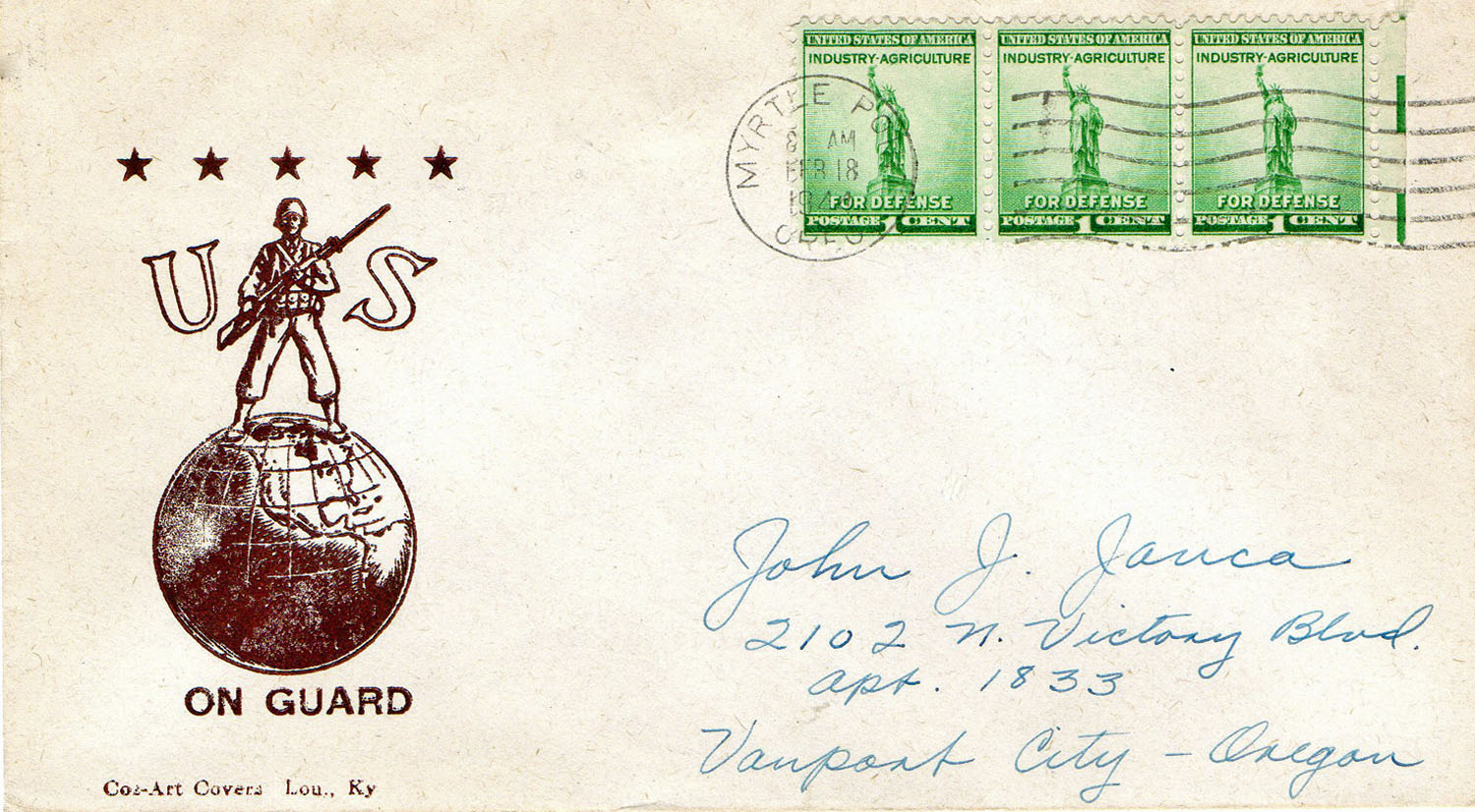PNWPHS
Copyright © 2024 by the Pacific Northwest Postal History Society · All rights reserved
Oregon
Overland migration to the Oregon Country was repeatedly driven by prospects of a better future, sought for various reasons and realities. Word from successive settlement parties confirmed the existence of abundant and supporting natural resources. Settlers elected a provisional government in 1843 and began offering conditional 320- or 640-acre parcels of public lands to settlers. These actions were later confirmed when the U.S. Congress passed the 1850 Oregon Donation Land Law. The American presence within Oregon Country eventually reached a critical mass by the 1840s that served to offset existing British interests in the territory. Oregon Territory was established in 1848 and was made up of today’s states of Oregon, Washington, Idaho, and portions of Montana and Wyoming. Oregon was admitted to the Union in 1859 as the 33rd state.

The start of official postal service in the Oregon Country occurred in 1847, when the U.S. Congress authorized postal facilities, routes, and postal rates. Post offices in Astoria, where the Columbia River empties into the Pacific Ocean, and Oregon City, twelve miles south of Portland on the Willamette River, were authorized -- the first approved post offices west of the Rocky Mountains. Early contracts to carry the mail included ocean delivery, either around the tip of South America or by a shorter route that packed mail across the Isthmus of Panama, between east and west coast locations. The first regularly authorized contract mail was carried between San Francisco and Portland on the Sequin in command of Captain Z. C. Norton, arriving January 26, 1850. In 1851 Congress expanded the postal system to 18 separate postal routes throughout what was then Oregon Territory. The Post Office Department was simply replicating its early reliance on public-private investment to carry the mail.
Selected Oregon Covers
Joseph was established April 23, 1880 as the fifth post office in Wallowa County and is one of only five remaining open in the county. It was named for Nez Perce Indian Chief Joseph who claimed the whole valley as his ancestral home. This cover is the earliest known postmark from Joseph and is the only manuscript cancel recorded (a nice oval county cancel is recorded beginning November 22, 1880). The best part of this cover is the enclosed letter from a soldier to his mother describing the “red fish” or mature sockeye salmon.
Courtesy of Bill Beith.
Courtesy of Bill Beith.
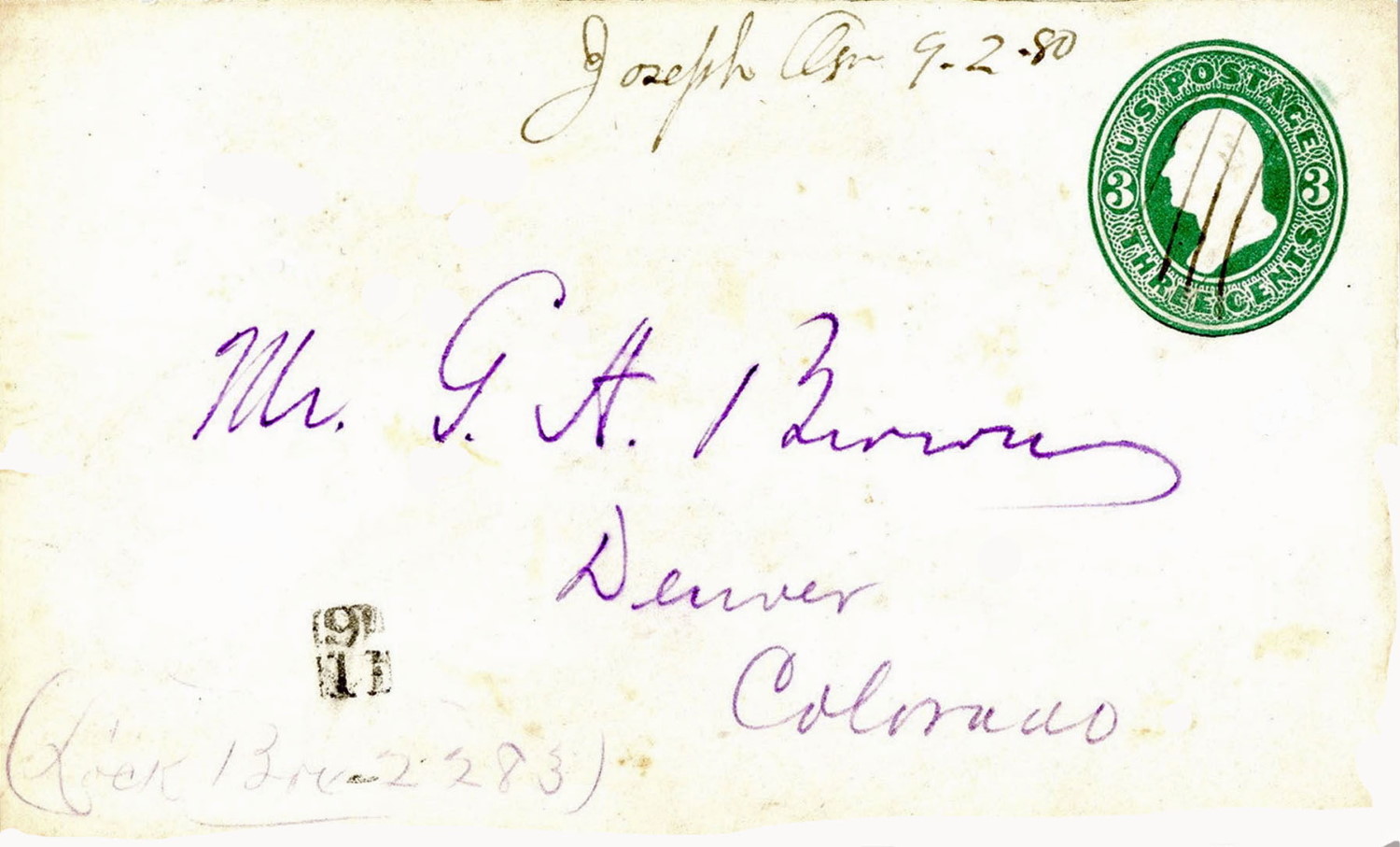
The Oregon Industrial Exposition was held in Portland from September 28 to October 29, 1899. This advertising cover promoting the event bears a Portland flag cancel and was sent 9 days before the exposition closed. The exposition was held in a large building directly north of what is now Providence Park (originally a flat area called Multnomah Field), but it later burned to the ground when a grandstand at the field caught fire.
Courtesy of Larry Maddux.
Courtesy of Larry Maddux.
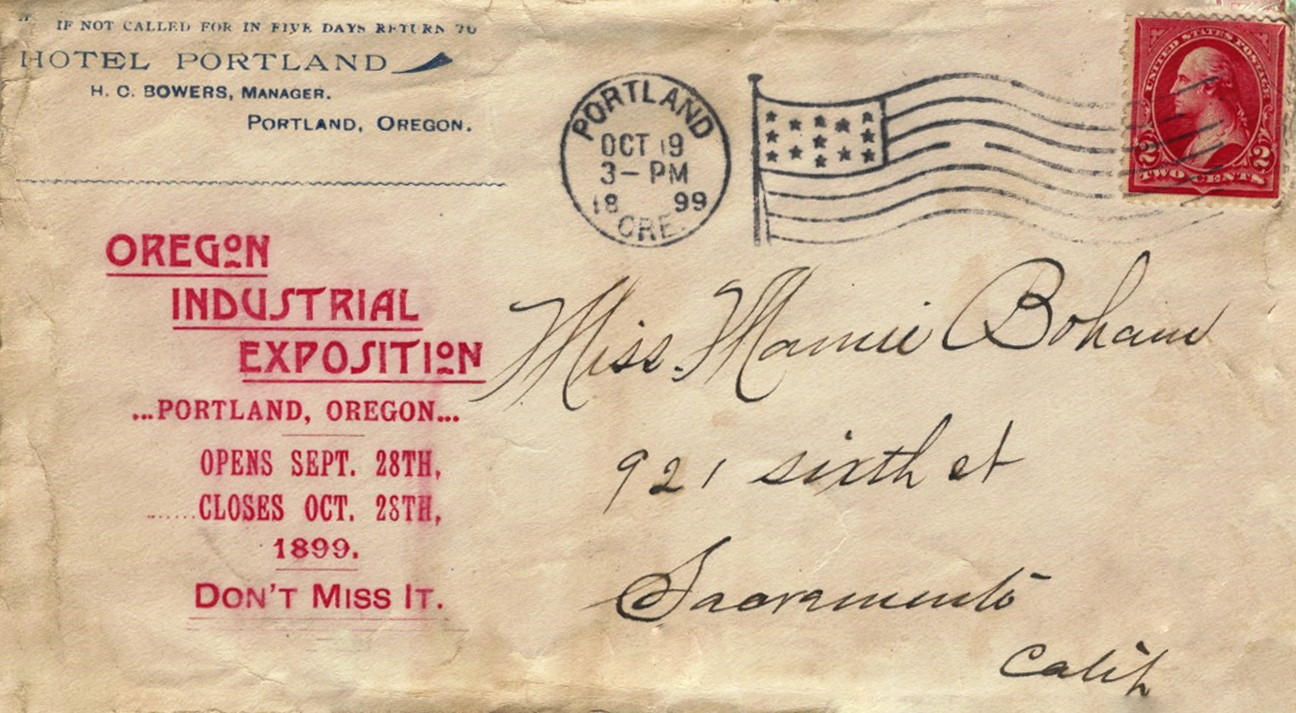
This 1904 cover, franked with 2¢ postage (Scott 319) left Crescent City, California and traveled 128 miles by horse-power over six days (138 hours in the mail) to reach its destination, Coquille, Oregon (Coos County). Eight post offices handled the mailpiece, and as required by the U.S. Post Office Department, applied their identifying postmarks on the reverse of the cover. The cover's journey can be traced as follows:
1) Posted at Crescent City, California
April 9, 1904, 5 PM
2) In transit, Smith River, California
April 11, 1904, 11 AM
3) In transit, Chetco, Oregon
April 11, 1904
(Chetco operated 1863-1910)
4) In transit, Harbor, Oregon
April 11, 1904
(Harbor operated 1894-1958)
5) In transit, Gold Beach, Oregon
April 12, 1904, AM
6) In transit, Port Orford, Oregon
April 13, 1904, 7 PM
7) In transit, Myrtle Point, Oregon
April 14, 1904, 6 PM
8) Received at Coquille, Oregon
April 15, 1904, 11 AM
Courtesy of Steve King.
1) Posted at Crescent City, California
April 9, 1904, 5 PM
2) In transit, Smith River, California
April 11, 1904, 11 AM
3) In transit, Chetco, Oregon
April 11, 1904
(Chetco operated 1863-1910)
4) In transit, Harbor, Oregon
April 11, 1904
(Harbor operated 1894-1958)
5) In transit, Gold Beach, Oregon
April 12, 1904, AM
6) In transit, Port Orford, Oregon
April 13, 1904, 7 PM
7) In transit, Myrtle Point, Oregon
April 14, 1904, 6 PM
8) Received at Coquille, Oregon
April 15, 1904, 11 AM
Courtesy of Steve King.
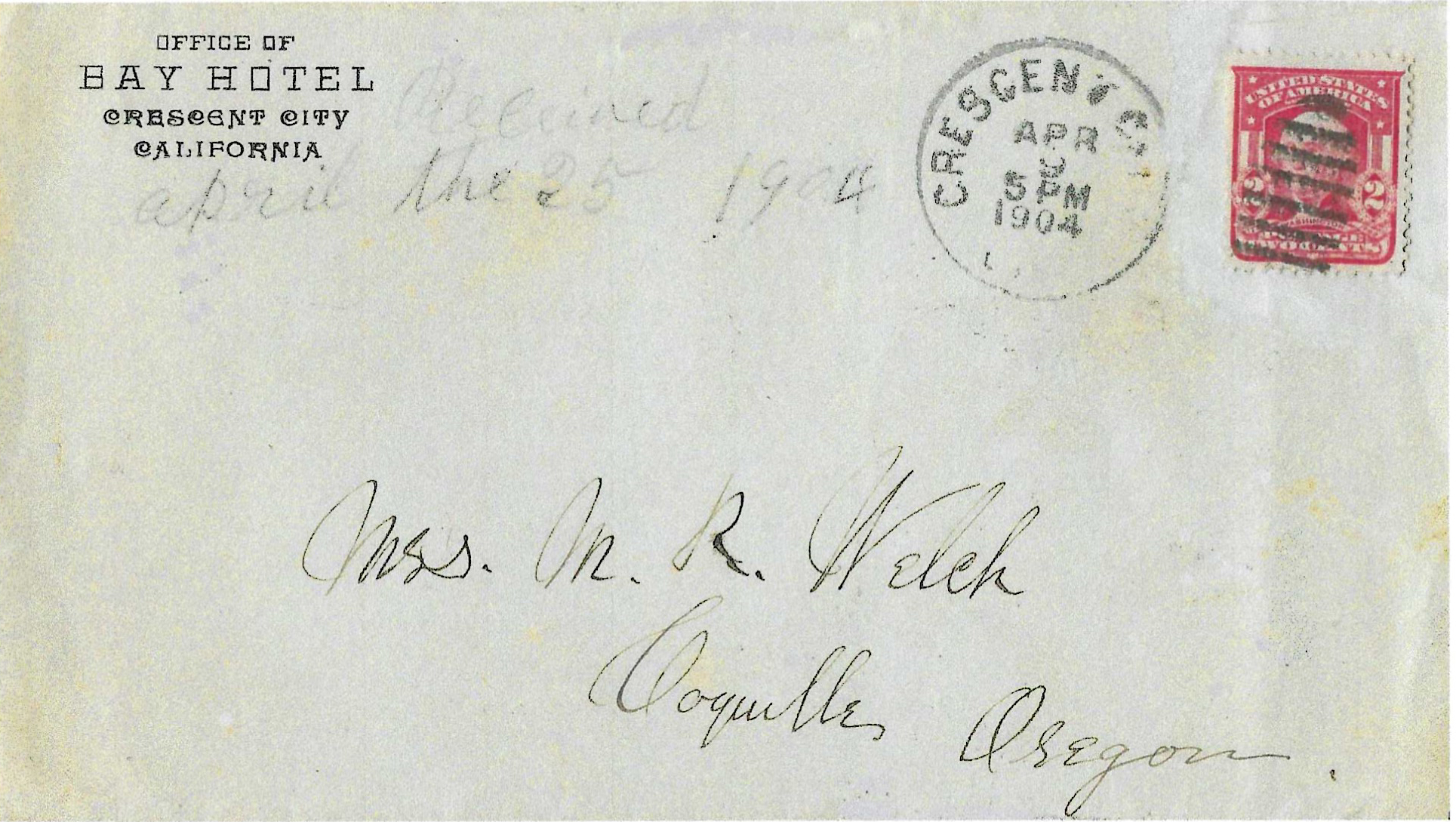
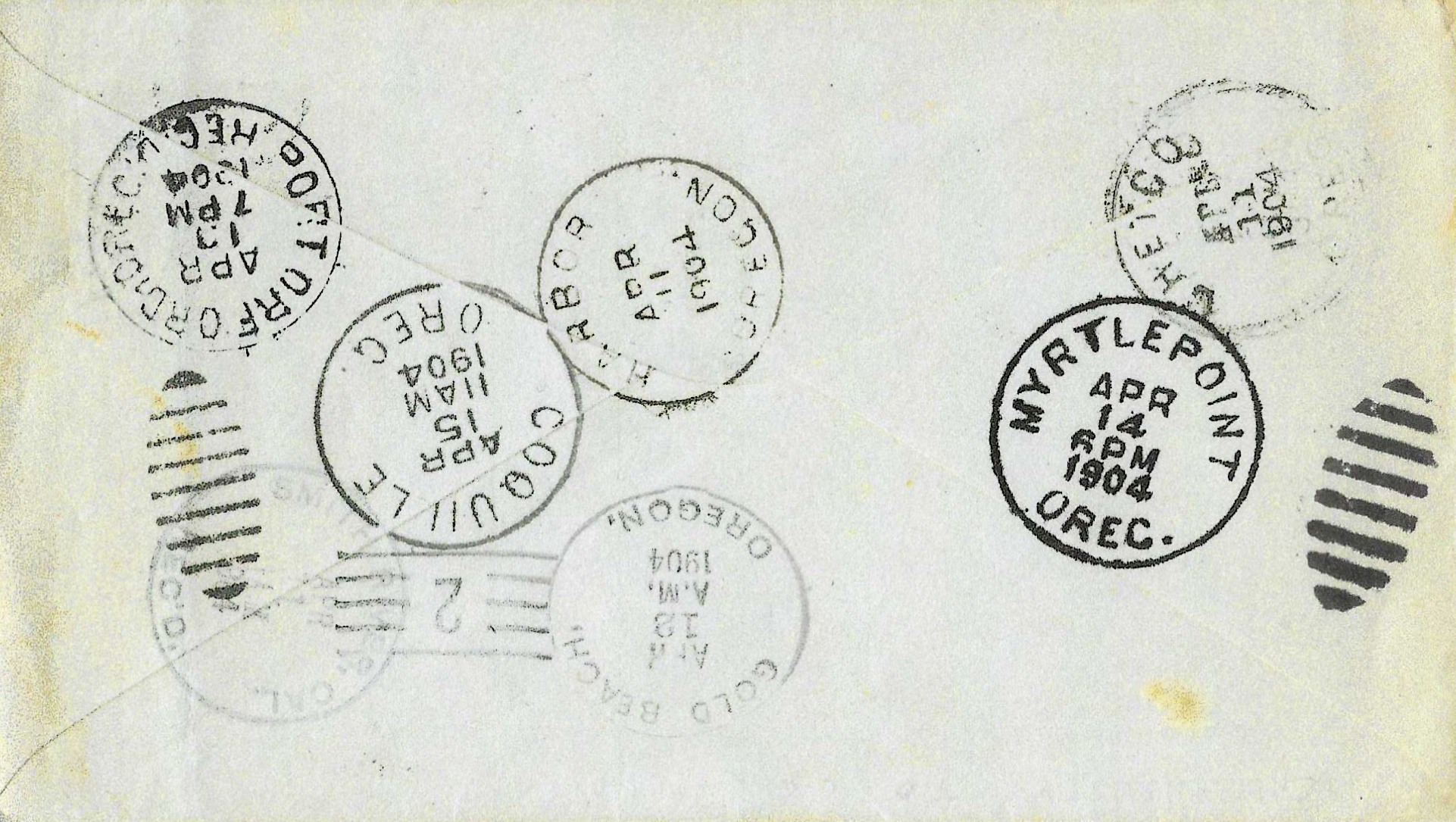
Vanport City was a temporary compactly designed company town built by Henry J. Kaiser to house shipworkers during World War II. Located on the floodplain on the Oregon side of the Columbia River, it was the second largest city in Oregon during the war years. A May 31, 1948 flood totally destroyed the development. Vanport City operated as a classified branch of the Portland post office from April 1943 to June 1948.
Courtesy of Charles Neyhart.
Courtesy of Charles Neyhart.
